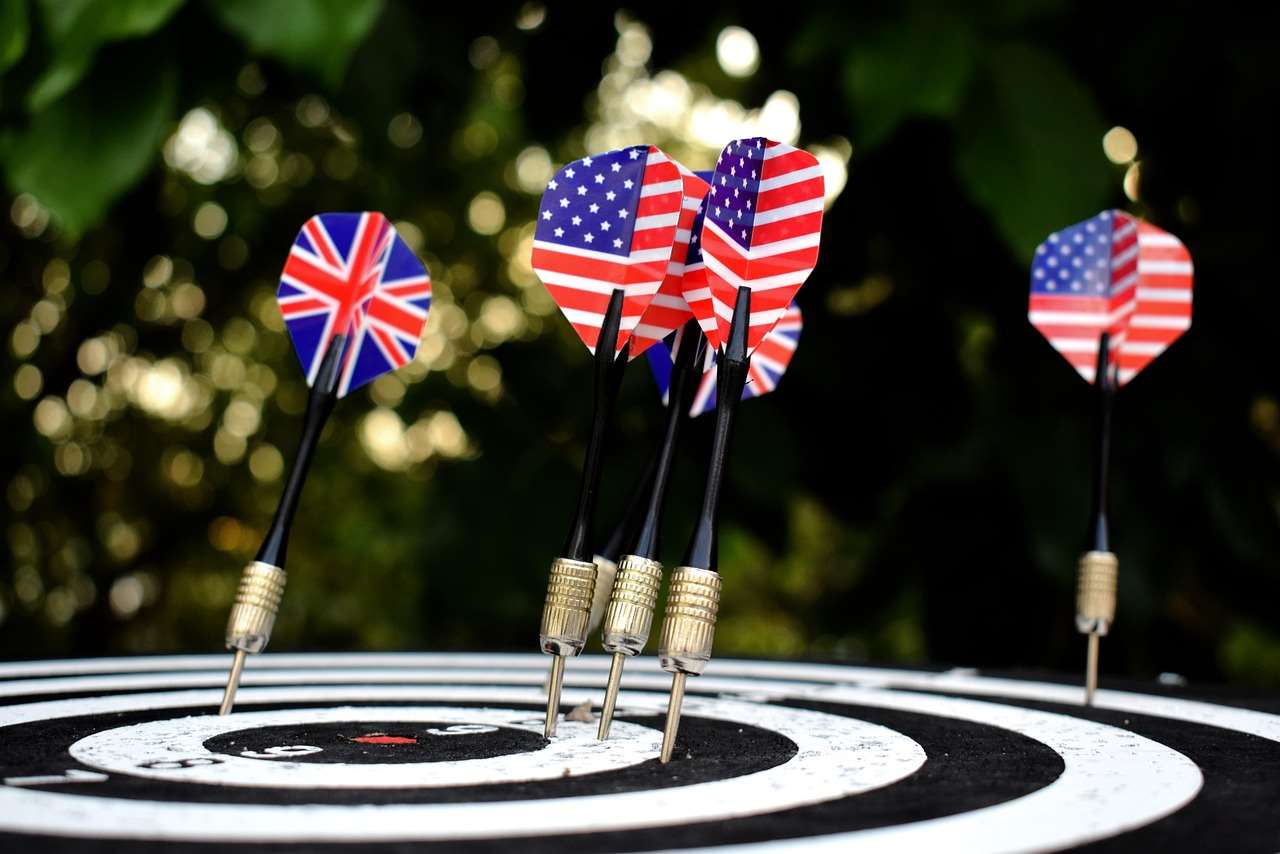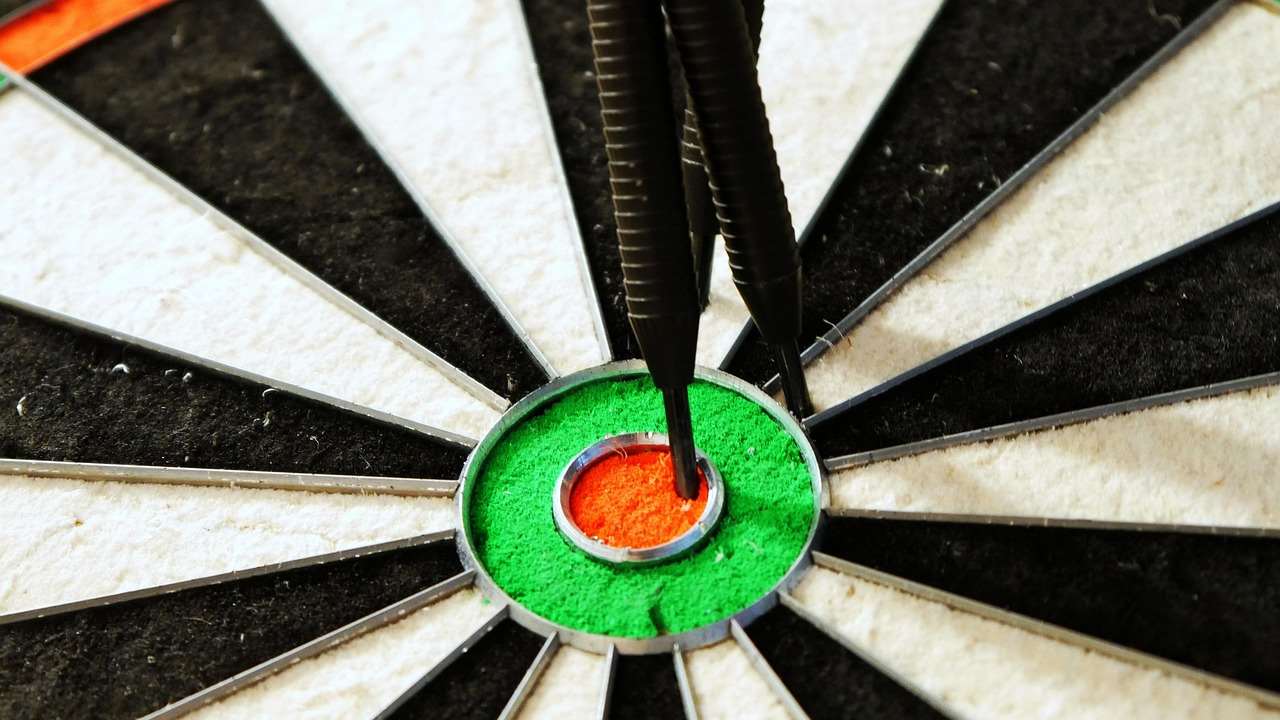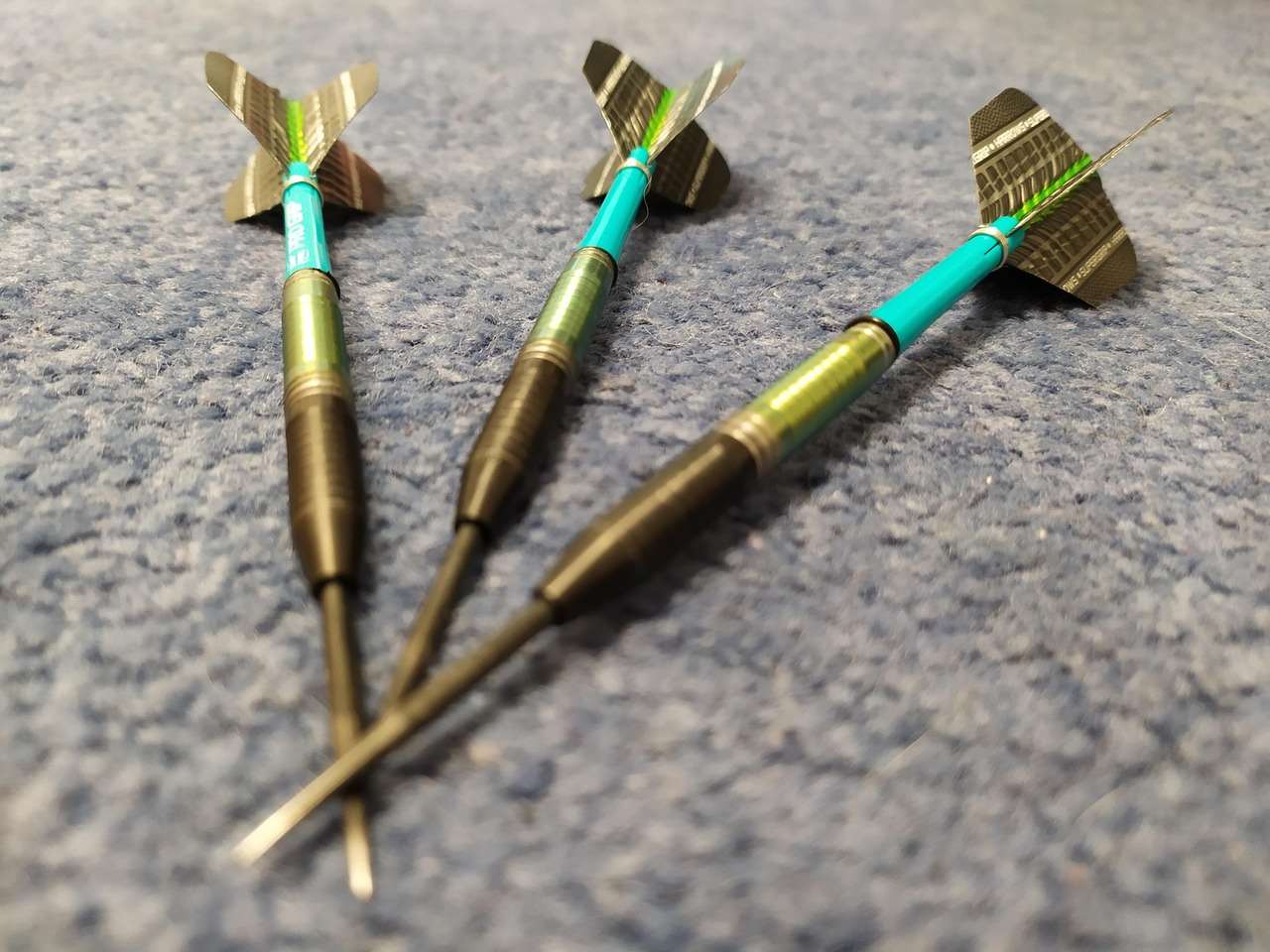Choosing what darts to buy can feel overwhelming, but boils down to finding the right weight, material, grip, and shape for *your* throwing style. This guide will walk you through everything you need to consider, from understanding different dart types to fine-tuning your setup for optimal performance.
⚠️ Still Using Pen & Paper (or a Chalkboard)?! ⚠️
Step into the future! The Dart Counter App handles all the scoring, suggests checkouts, and tracks your stats automatically. It's easier than you think!
Try the Smart Dart Counter App FREE!Ready for an upgrade? Click above!
Understanding the Key Components of Darts
Before diving into what darts to buy, it’s crucial to understand the anatomy of a dart and how each component affects its flight and your throw. Darts consist of four main parts: the barrel, the point, the shaft (or stem), and the flight.
The Barrel: The Heart of Your Dart
The barrel is the main body of the dart and significantly influences its weight, grip, and balance. Barrels are typically made from brass, nickel-silver, or tungsten. Tungsten is denser than other materials, allowing for slimmer barrels with the same weight. A slimmer barrel allows for tighter groupings on the dartboard. When considering darts world champion price, the price reflects quality of materials. You can use a dartboard scoreboard to help determine if your groupings are tight.
- Brass: The most affordable option, but also the bulkiest. Good for beginners looking for a budget-friendly set.
- Nickel-Silver: A step up from brass, offering better durability and a slightly slimmer profile.
- Tungsten: The premium choice, providing the slimmest barrels and highest density for optimal grouping. Tungsten darts are available in varying percentages (e.g., 80%, 90%, 95%), with higher percentages indicating greater density and higher cost.
The grip on the barrel also matters. Grooves, rings, and knurling provide different levels of traction. Experiment to find a grip that feels comfortable and secure in your hand. You may want to visit a specialty store so you can feel what darts to buy before you buy.

The Point: Your Connection to the Board
The point of the dart is the sharp end that penetrates the dartboard. Points can be fixed or replaceable. Replaceable points allow you to customize your darts and replace worn or damaged points easily. Some points are designed to grip the board better, reducing bounce-outs.
The Shaft (Stem): Stability and Flight
The shaft, also known as the stem, connects the barrel to the flight. Shafts are typically made from nylon, aluminum, or carbon fiber. The length of the shaft affects the dart’s trajectory; shorter shafts tend to result in a flatter trajectory, while longer shafts create a more arcing flight path. Nylon shafts are the most common and affordable, but aluminum and carbon fiber shafts offer greater durability.
The Flight: Aerodynamics and Accuracy
The flight is the fin-shaped piece at the end of the dart that provides stability and controls its flight path. Flights come in various shapes (standard, slim, kite, etc.) and materials (feather, nylon, plastic). Standard flights are the most common and offer good stability. Slim flights reduce drag and can improve grouping. Consider foldable flight darts vs gliders if you need something compact and easy to carry.
Choosing the Right Dart Weight
Dart weight is a crucial factor in determining your accuracy and throwing consistency. Darts typically range from 16 to 30 grams. Beginners often find it easier to start with heavier darts (22-26 grams) because they are more stable in the air. As you develop your throwing technique, you may find that a lighter dart (20-24 grams) suits you better. Consider your personal strength and throwing style when selecting a dart weight.

What Darts to Buy: Considering Your Skill Level
What darts to buy largely depends on your experience level. Beginners and seasoned pros have different needs and preferences.
Beginner Darts: Focusing on Affordability and Forgiveness
If you’re new to darts, start with a set of brass or nickel-silver darts in the 22-24 gram range. These darts are affordable and offer a good balance of stability and forgiveness. Look for a barrel with a moderate grip to help you maintain control. Don’t overspend until you’ve developed your technique and understand your preferences. If you want a visual reference, visit darts tactics scoreboard to help you stay focused and improve your game.
Intermediate Darts: Refining Your Setup
As you progress, you can start experimenting with different barrel materials, weights, and grip styles. Consider upgrading to tungsten darts for a slimmer profile and tighter groupings. Experiment with different shaft lengths and flight shapes to fine-tune your dart’s trajectory. Pay attention to what feels comfortable and consistent in your hand.
Advanced Darts: Precision and Customization
Advanced players often have very specific preferences when it comes to dart setup. They may choose to use custom-made darts or mix and match components to create the perfect dart for their throwing style. High-percentage tungsten darts are common among advanced players, along with specialized grips and flight shapes.

Steel Tip vs. Soft Tip Darts
Another crucial consideration is whether you need steel tip darts or soft tip darts. This depends on the type of dartboard you’ll be using.
Steel Tip Darts: For Bristle Dartboards
Steel tip darts are designed for use with bristle dartboards. They have sharp, pointed tips made of steel that penetrate the compressed sisal fibers of the board. Steel tip darts are the traditional choice for professional darts and are often preferred by serious players.
Soft Tip Darts: For Electronic Dartboards
Soft tip darts have plastic tips and are designed for use with electronic dartboards. The plastic tips are less damaging to the electronic board and allow the board to register scores electronically. Soft tip darts are popular in pubs and arcades and are often preferred by casual players.
Factors to Consider When Choosing Darts
Beyond material and weight, several other factors can influence your choice of darts.
- Grip Style: Your natural grip will dictate the type of barrel grip that feels most comfortable and secure.
- Balance: The balance point of the dart can affect its flight. Some players prefer a front-weighted dart, while others prefer a center-weighted or rear-weighted dart.
- Personal Preference: Ultimately, the best darts for you are the ones that feel the best in your hand and give you the most consistent results. Don’t be afraid to experiment and try different setups until you find the perfect combination. You might also enjoy playing pop darts scoring rules.

Where to Buy Darts
You can buy darts from a variety of sources, including:
- Online Retailers: Online retailers offer a wide selection of darts at competitive prices. Be sure to read reviews and compare prices before making a purchase.
- Specialty Dart Shops: Specialty dart shops offer a more personalized shopping experience and expert advice. You can try out different darts before you buy and get recommendations from experienced players.
- Sporting Goods Stores: Sporting goods stores typically carry a limited selection of darts, but they can be a convenient option if you need to buy darts quickly.
Maintaining Your Darts
Proper maintenance is essential for keeping your darts in good condition and ensuring consistent performance. Clean your darts regularly with a soft cloth to remove dirt and grime. Sharpen your steel tips with a dart sharpener to maintain their grip on the board. Replace worn or damaged shafts and flights to ensure optimal flight stability. Consider using a darts score keeper 301 so you can track your scores, assess your darts and dart-throwing skill, and make the right decision on what darts to buy.

Fine-Tuning Your Dart Setup
Once you’ve chosen a set of darts, you can further fine-tune your setup by experimenting with different shaft lengths, flight shapes, and point types. Small adjustments can make a big difference in your accuracy and consistency. Don’t be afraid to try new things and see what works best for you. You can even use a Dart Counter App on your phone to record your stats.
Conclusion: Finding Your Perfect Darts
Choosing what darts to buy is a personal journey. There’s no one-size-fits-all solution. By understanding the different components of darts, considering your skill level and throwing style, and experimenting with different setups, you can find the perfect darts to improve your game and enjoy the sport of darts to the fullest. Start your search today and discover the difference that the right darts can make! Now that you know what darts to buy, go out there and improve your game!
Hi, I’m Dieter, and I created Dartcounter (Dartcounterapp.com). My motivation wasn’t being a darts expert – quite the opposite! When I first started playing, I loved the game but found keeping accurate scores and tracking stats difficult and distracting.
I figured I couldn’t be the only one struggling with this. So, I decided to build a solution: an easy-to-use application that everyone, no matter their experience level, could use to manage scoring effortlessly.
My goal for Dartcounter was simple: let the app handle the numbers – the scoring, the averages, the stats, even checkout suggestions – so players could focus purely on their throw and enjoying the game. It began as a way to solve my own beginner’s problem, and I’m thrilled it has grown into a helpful tool for the wider darts community.